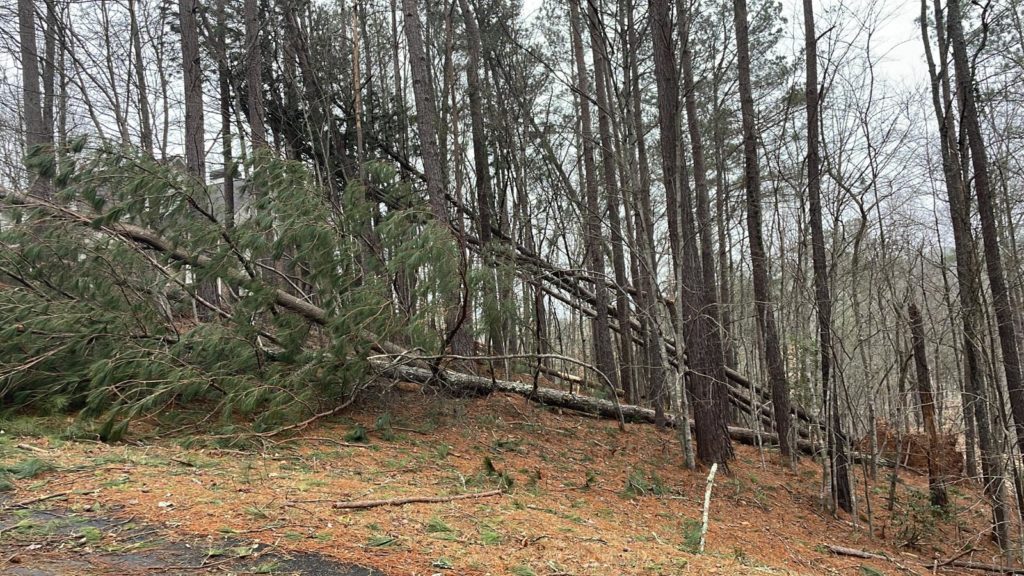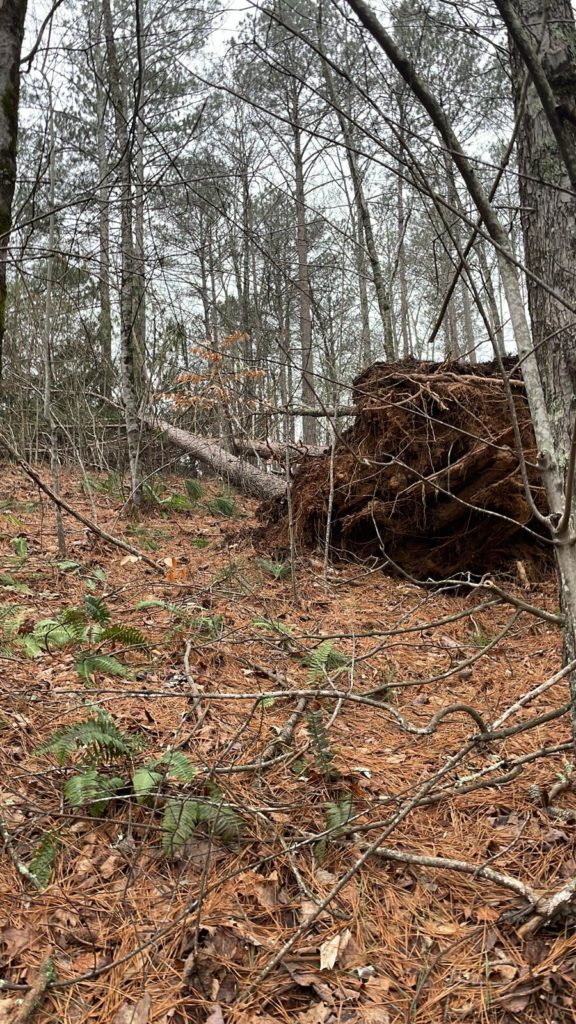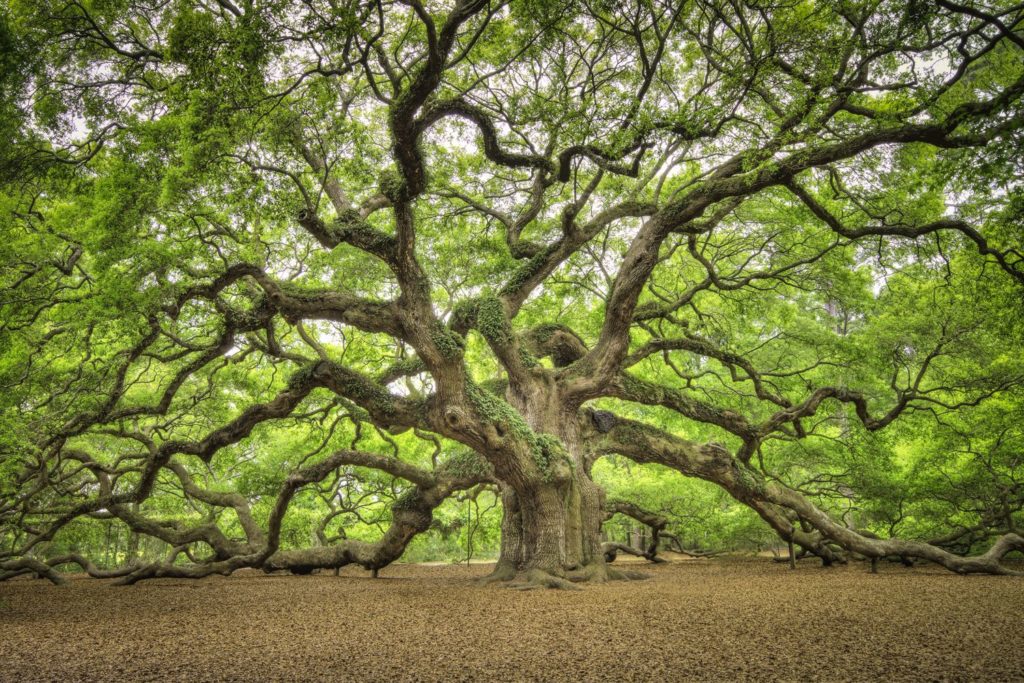Of Storms and Wind and Pines and Oaks
By Dr Matthew Elliott, President, Oasis International

My wife, Laura, and I have moved to the woods, and we are really loving it. To get up in the morning and see trees and hear a bubbling stream instead of 18-wheel trucks, beeps, and traffic from one of Chicago’s main city arteries – North Avenue – refreshes the soul. However, when Laura and I watched the trees around our house bending much farther then seemed natural in 60-mile-per-hour winds storm, we certainly felt more vulnerable than in our neat suburban neighborhood last year. Last year, high winds just meant a bunch of garbage getting blown into my end-of-the-street-yard if it was on trash day. Now, we no longer put out our trash on the curb; we transport it to the dump as there is no trash collection. Here in the woods, there are dozens of big trees that could blow through a window right into our bedroom, kitchen, or living room.


The next morning,
the wreckage from the storm was a lot worse than some blown garbage. Trees were
uprooted, blocking the one road to town, roads were covered in broken branches,
and our deck furniture was in disarray. The next day, we saw trees over 50 feet
tall blown down throughout the woods, root balls exposed and sticking into the
air. As we drove out of our mountain home to town, we kept pointing at the
downed trees. “Look at that one! That one was over the road before they cut it
down. Look over there – there are three blown down together.” There were one or
two maple or oaks broken in half, but all the trees that came up from the
roots, blown over out of the dirt were pines. These pines were growing close
together in a pine forest. They seemed to rely on each other to break the wind
and grow tall instead of growing deep roots. But for many, this strategy failed
during this wild storm.
As I was on my
prayer walk this morning, I noticed even more trees pulled over with roots
sticking straight up vertical and tree-trunks that should be vertical;
horizontal. It made me remember a single tree – one of the most beautiful in
all the world. On my first visit to Charleston, South Carolina to visit my
wife’s grandparents as a newly engaged couple, she dragged me to see Angel Oak.
“We’re driving all this way to see an old tree” I thought, “really?” As old as
500 years (some think over 1,000), measuring 28 feet around and 187 feet wide
from tip to tip, instantly I knew it was worth the trip. Breathtaking! They
think Angel Oak is one of the oldest living things in North America. Angel Oak
survived the 135 mile an hour winds of hurricane Hugo in 1989, the 130 mile an
hour winds of hurricane Hazel in 1954, hurricane Gracie in 1959, and hurricane
Matthew’s flooding in 2016. And how many mighty storms came before, in the 400
years before we named hurricanes?

Angel Oak still stands
after 135 mile an hour swirling winds, flooding, and pouring rains; in the path
of some of the most awesome storms the Atlantic Ocean has to offer. Our inland
pines got torn up from the roots in gusts of 60 mph.
I think of these
hurricanes, and the curled and even distorted, twisted, ancient, branches of
Angel Oak. Twisted from 500 years of standing alone in the path of ocean
weather. But between great storms it was being nourished by the intense sun
with no other trees shielding it from the warmth, getting plenty of water from
moist ocean winds and growing roots deep. Times of plenty and times of struggle
made twisted deformity into awe-inspiring majestic beauty.
And I think of God’s
work growing me. What kind of roots do I have? Am I working on growing my roots
when things are good? What is under the surface to secure me for the storms and
wind ahead? Am I like a fast-growing pine in a forest, relying on the group to
keep me upright? Or am I building my roots to stand alone – if need be – in any
weather?
To all who mourn in Israel, he will give a crown of beauty for ashes, a joyous blessing instead of mourning, festive praise instead of despair. In their righteousness, they will be like great oaks that the Lord has planted for his own glory.
Isaiah 61:3 (NLT)
That is our mission
at Oasis – to grow righteous oaks with majestic branches grown up through
hardship and twisted in suffering, with deep roots from knowing and
understanding the words of God. These are the mighty trees that people will
travel hundreds of miles to see, just to behold their greatness and rest in their
shade. These are the oaks that the Lord has planted for his glory and to bless
the world.
Dr Elliott's passion to help leaders in Africa develop and access ministry tools, with content addressing needs in their contexts, has driven him to lead Oasis International for over two decades. Click here to learn more about Dr Elliott.
Across the world – and particularly across Africa – millions of people have given their lives to Jesus but do not have access to a Bible. We are committed to changing this by providing resources like the Africa Study Bible. Join us in giving Bibles here.
Share on Social Media
Share on Facebook
Share on Twitter
Share on LinkedIn